#Lysippus
Text

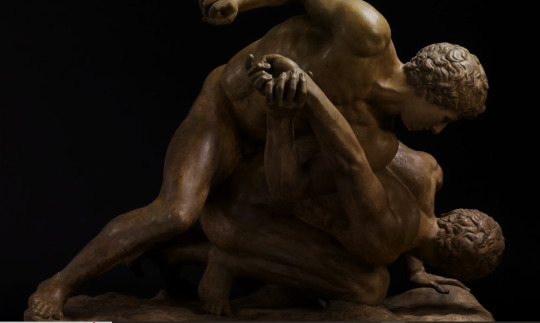
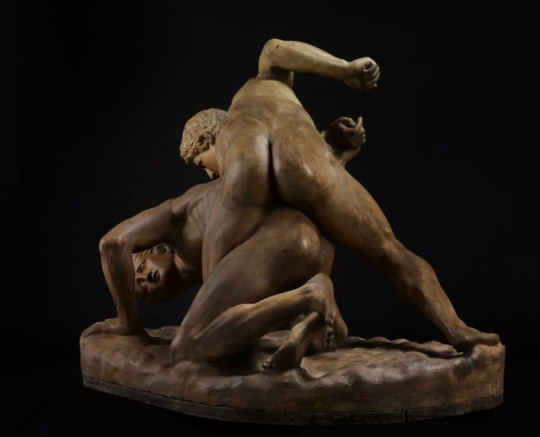
The Wrestlers, Pergamene school, 379-300 B.C
#art history#art#ancient greece#aesthethic#greek art#statue#sculpture#wrestlers#pergamene school#lysippus#royal academy of arts#uffizi#homoerotic art#classic art#classicism#antiquity
229 notes
·
View notes
Note
What was the funny story about Tiberius in Pliny?
I'm glad you asked!
This is a story you can find in Pliny the Elder's Natural History, 34.62.
So there was this sculpter named Lysippus (he's super famous) and he made a statue depicting a man using a body scraper. During the time of Tiberius, this statue was set up in front of the Baths of Agrippa, no less (!). A very fitting location.
Tiberius loved this statue a lot. Probably a little bit more than the average person loves a statue. Apparently at first he managed to control himself, but eventually he gave in to temptation and set up the statue in his bedchamber (!) putting another statue in its place.
And the people were mad. They were not impressed with the replacement statue apparently. A ton of people gathered at the theatre shouting "Give us back the man using a body scraper!" Which is honestly a really funny image.
Even though Tiberius had fallen in love with this statue, he returned it in the name of peace. The end.
That statue must've been really seriously amazing to warrant such a... story. I wonder what it looked like.
12 notes
·
View notes
Text
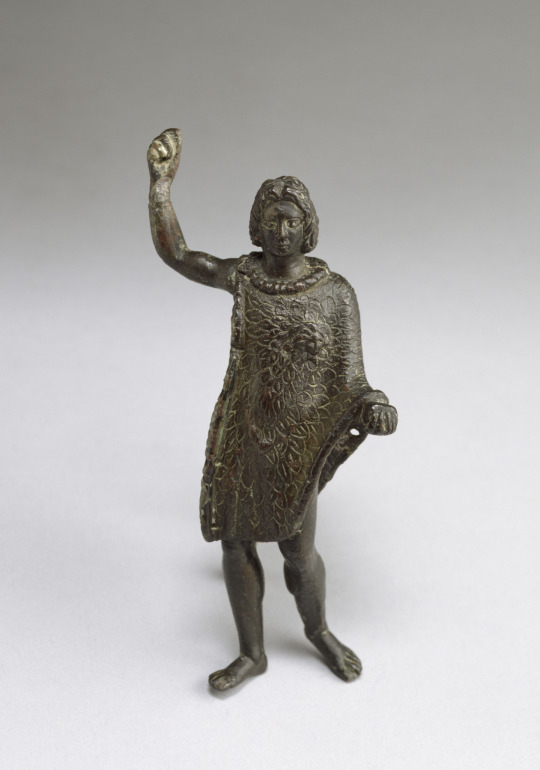
Statuette (bronze inlaid with silver) of Alexander the Great, standing in contrapposto and wearing the aegis. He may once have held a spear or lance in his right hand and the Palladion in his left. Roman Imperial copy (1st-3rd cent. CE) after an original thought to have been sculpted by Lysippus during Alexander's lifetime. Perhaps from Alexandria; now in the Walters Art Museum, Baltimore.
#classics#tagamemnon#Alexander the Great#ancient history#Ancient Greece#Hellenistic period#art#art history#ancient art#Greek art#Ancient Greek art#Hellenistic art#Lysippus#Lysippos#Roman art#Ancient Roman art#Roman Imperial art#sculpture#portrait sculpture#statuette#metalwork#bronze#bronzework#Walters Art Museum
141 notes
·
View notes
Photo

Hercules, marble, 2nd century
Louvre Museum
57 notes
·
View notes
Text

Put him back.
8 notes
·
View notes
Text
New worst history post! Ran across this one recently and its offenses are twofold
First, op is being asked why they portray everybody in Greek mythology as black. Their response is that populations were different in Bronze Age Greece than Classical Greece and that the universally-white representation is not accurate (the latter of which is true) and that actually they were all African (which is decidedly not true-- this thing where you make Greek mythology/history more "accurate" or "inclusive" by portraying everyone as black to me is bizarre and tragic, because a. if it's not "inclusive" enough for you as it historically was, go obsess over some other media b. world history is not "everyone was white or everyone was black," and c. there are characters in Greek myths who are clearly not ethnic Greek or what would be considered white, and we Know who they are, characters such as Andromeda [Ethiopian] , Europa and Cadmus [Phoenician] the Danaides [Libyan/Egyptian], Memnon (Ethiopian) and you could easily portray them accurately while still showing realistic diversity but NO, you randomly decide Iphigenia will be black for some reason instead 🙄. Also, it's supposedly about diversity and inclusivity, yet you never see any random Asian headcanons for these characters....)
But that's not what got this into Worst History Posts!
As evidence for the above, op goes on to say THIS

Like.
They're literally saying there are no well known human representations in Mediterranean art prior to the Renaissance.
What do you even say in response to this???
Like just off the top of my head
(Since they name dropped Alexander, we'll start with him)
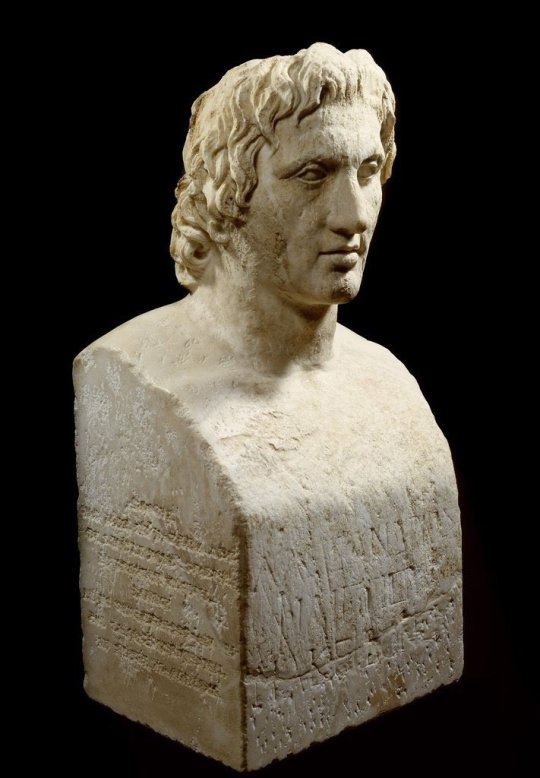
Copy (100-200 AD) of portrait carved by Alexander's personal portraitist Lysippus 330 BC (to say nothing of the zillions of other representations of him throughout Greek and Roman art)
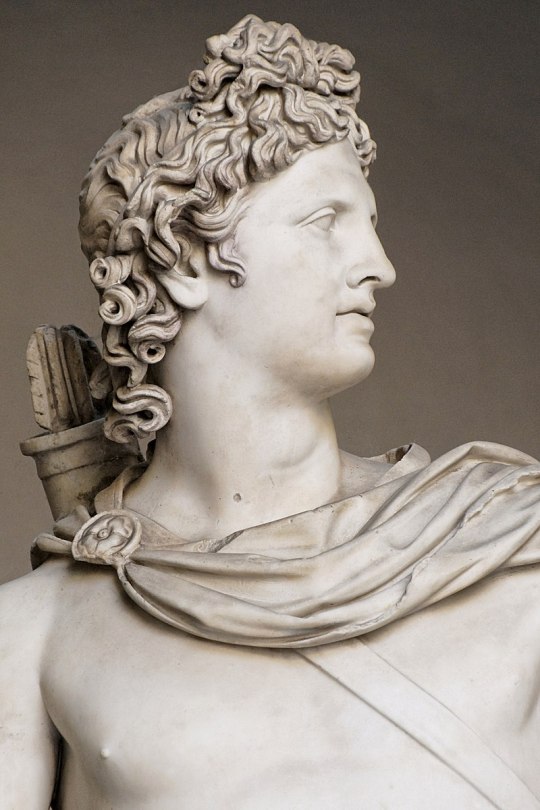
Roman, Greek-inspired or copied (120-40 AD) You know, one of the most famous pieces of classical art in the world??
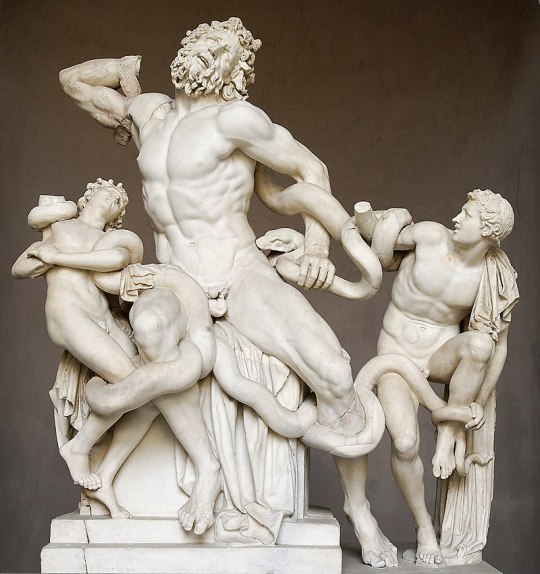
or you know, this unfamiliar and obscure little piece from 200 BC (Classical)
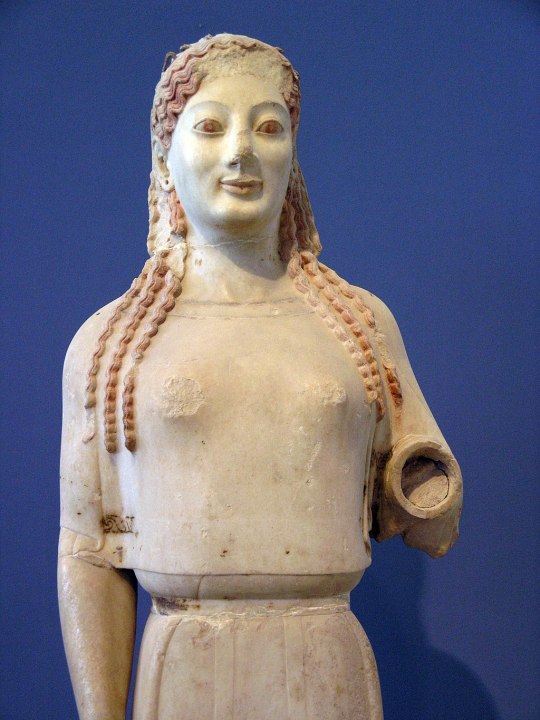
or the thousands of kores and kouros out there - 530 BC (Archaic)

or this guy, who clearly nobody's ever seen or heard of from 1550 BC (Bronze Age)
Like OP I'm sorry your uneducated ass can't think of a single piece of art from southern Europe pre-renaissance (wonder what those crazy italians were renaissance-ing back to, exactly???) but that is not a problem LITERALLY anyone else has
#worst history/mythology post series#the ancient world#ancient greece#greek mythology#ancient greek art#bronze age greece
18 notes
·
View notes
Text
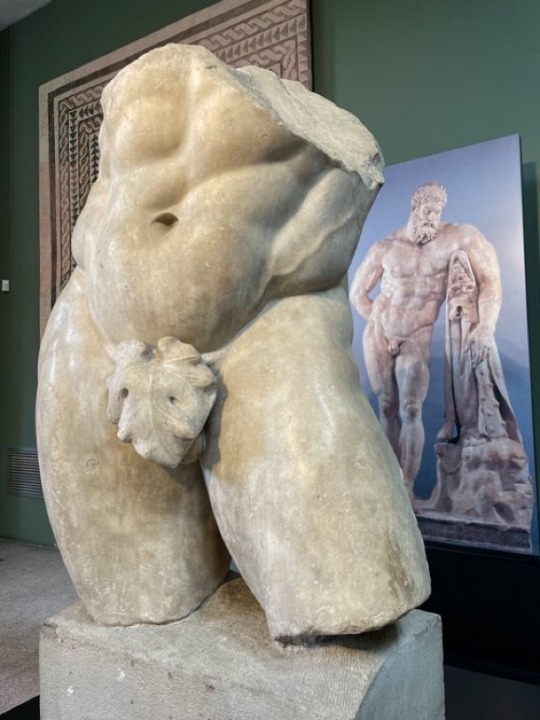
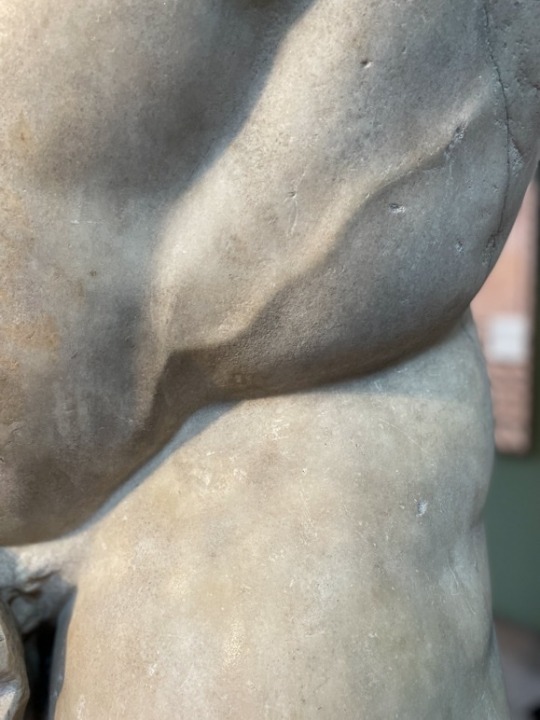
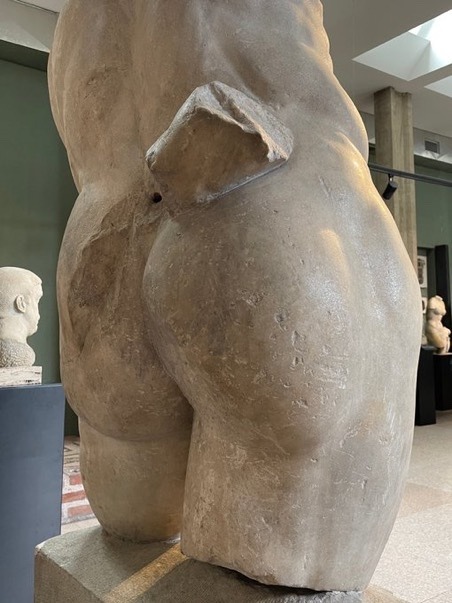

Fragment of a huge Roman marble statue of Hercules at rest. The full statue would have shown the demigod leaning on his club, draped with the skin of the Nemean lion, a model derived from the Greek sculptor Lysippus and known from numerous copies - leaf added in the 1800s. The 2nd century statue was found in excavations of central Milan behind the famous Duomo, on the site of the 'Herculean Baths' built in the early 4th century; the statue likely decorated these baths despite already being two centuries old.
2 notes
·
View notes
Text
Holidays 2.9
Holidays
Beatlemania Day (US)
Charlie Day Day
Civil Aviation Worker’s Day (Russia)
Devil on the Loose Day (Cornwall, UK)
Día Del Odontólogo (Dentist's Day; Mexico)
Fish Protection Day
Fugu Day (Japan)
Hadaka Matsuri (Naked Festival; Japan)
Hollywood Walk of Fame Day
International Day of the Dentist
International Greek Language Day
National Cut the Cord Day
National Develop Alternative Vices Day
National Hooky Day
National Owen Day
National Press Day (Indonesia)
National Toothache Day
Pennycress Day (French Republic)
Read In the Bathtub Day
Stop Bullying Day
Volleyball Day
Weather Service Day
Welsh Language Music Day (UK)
World Zoothanasia Day
Food & Drink Celebrations
Chocolate Day (India)
Hershey’s Chocolate Day
Meat Day (Japan)
National Bagel Day (a.k.a. National Bagels and Lox Day)
National Pizza Day (a.k.a. Pizza Pie Day)
2nd Friday in February
Carnival Friday [Friday before Ash Wednesday]
Fry Day (Pastafarian; Fritism) [Every Friday]
The Inbox Day [2nd Friday]
International Winter Bike to Work Day [2nd Friday]
No One Eats Alone Day [2nd Friday]
P.S. I Love You Day [2nd Friday]
Turning Into A Rainbow Day [Friday closest to 14th]
Independence & Related Days
Confederate States of America (Founded; 1861) [unrecognized]
Galiria (Declared; 2018) [unrecognized]
Nation Day (Jamaica)
Rebellion Declaration Day (Massachusetts declared in rebellion by British Parliament) [Start of Revolutionary War]
Rome (Proclaimed a Republic; 1849)
New Year’s Days
New Year's Eve [Lunar Calendar] (a.k.a. …
Bituun (Mongolia)
Chinese New Year’s Eve (Taiwan)
Lunar New Year’s Eve (Macau)
Seol-na Holiday (South Korea)
Spring Festival (China)
Tet Eve (Vietnam)
Festivals Beginning February 9, 2024
Bonita Springs Seafood & Music Festival (Bonita Springs, Florida) [thru 2.11]
Carnival of Nazaré (Nazaré, Portugal) [thru 2.14]
Carnival of Torres Vedras (Torres Vedras, Portugal) [thru 2.14]
Carnival of La Bañeza (La Bañeza, Spain) [thru 2.17]
Fuego Austral (Buenos Aires, Argentina) [thru 2.13]
Great Lakes Ice Cream & Fast Food Trade Show (Battle Creek, Michigan) [thru 2.10]
Love & Wine (Mt. Airy, Maryland) [thru 2.11]
Maltese Carnival (Valletta, Malta) [thru 2.13]
Palanga Smelt Fishing Festival (Palanga, Lithuania) [thru 2.11]
Perth Festival (Perth, Australia) [thru 3.3]
Recife Carnival (Recife, Brazil) [thru 2.13]
Rio Carnival (Rio de Janeiro, Brazil) [thru 2.17]
São Paulo Carnival (São Paulo, Brazil) [thru 2.14]
Tapati Rapa Nui Festival (Easter Island, Chile) [thru 2.17]
Feast Days
Alice Walker (Writerism)
Alto of Altomünster (Christian; Saint)
Anne Catherine Emmerich (Christian; Blessed)
Ansbert of Rouen (Christian; Saint)
Anthony Hope (Writerism)
Apollonia (Christian; Saint & Martyr)
Attracta (Christian; Saint)
B.I. Jacoba (a.k.a. B.I. Jacqueline; Christian; Saint)
Bracchio (Christian; Saint)
Chloe the Clam (Muppetism)
Cyril of Alexandria (Christian; Saint)
Day of Nerthus and Wuldorfader (Pagan)
Einion the King (Western Orthodoxy)
Erhard of Scotland (Christian; Saint)
Extraterrestrial Culture Day (Pastafarian)
Feast of Apollo (Ancient Rome)
Feast of La'Ala'A (Upolu God of Wrestling; Polynesia)
Gerhard Richter (Artology)
Gŵyl Mabsant (a.k.a. Feast of the Patron; Wales) [Original Date]
Heterosexual Anxiety Day (Church of the SubGenius)
J.M. Coetzee (Writerism)
Leopold of Alpandeire (Christian; Blessed)
Lewinsky Day (Church of the SubGenius; Saint)
Lysippus (Positivist; Saint)
Maron (Maronite Church) [Lebanon]
Miguel Febres Cordero (Christian; Saint)
Narvik Sun Pageant Day (Vinterfestuka; Norway; Everyday Wicca)
Nebridius (Christian; Saint)
Nicephorns (Christian; Saint)
O-Tauesai (Rice Planting Festival; Japan; Starza Pagan Book of Days)
Out An Alien Lizard Day (Pastafarian)
Remembrance for Eyvind Kinnrifi (Asatru/Slavic Pagan Martyr)
Robert Morris (Artology)
Sabinus of Canosa (Christian; Saint)
Tales of Kelp-Koli (Shamanism)
Teilo Fair (Wales; Saint) [Original Date]
Theliau (Christian; Saint)
Well of Slaine Day (Celtic Book of Days)
Lunar Calendar Holidays
Mauni Amavasya (Day of Silence; Hinduism) [1st New Moon @ Jan/Feb]
Lucky & Unlucky Days
Taian (大安 Japan) [Lucky all day.]
Tycho Brahe Lucky Day (Scandinavia) [2 of 4]
Unfortunate Day (Pagan) [10 of 57]
Premieres
Ali Baba Bunny (WB MM Cartoon; 1957)
Beatles 1st Perform in U.S., on the Ed Sullivan Show (TV Special; 1964)
Beautiful Girls (Film; 1996)
Blubber, by Judy Blume (Novel; 1974)
Breaking Up Is Hard To Do, recorded by Neil Sedaka (Song; 1952)
Broken Arrow (Film; 1996)
Cold Storage (Disney Cartoon; 1951)
Country Boy (WB MM Cartoon; 1935)
Devil’s Feud Cake (WB MM Cartoon; 1963)
Dollhouse, by Melanie Martinez (Song; 2014)
Falstaff, by Giuseppi Verdi (Opera; 1893)
The Fixer Uppers (Film; 1935)
Harvest Time (Terrytoons Cartoon; 1940)
The Hollywood Matador (Woody Woodpecker Cartoon; 1942)
I Can’t Stand Up For Falling Down, by Elvis Costello (Song; 1980)
Lisa Frankenstein (Film; 2024)
Little Britain (UK TV Series; 2003)
Little Red Corvette, by Prince (Song; 1983)
Magical Maestro (MGM Cartoon; 1952)
Magick in Theory and Practice, by Aleister Crowley (Spiritual Book; 1929)
Morrison Hotel, by The Doors (Album; 1970)
The Mouse That Roared, by Leonard Wibberley (Novel; 1955)
Myths to Live By, by Joseph Campbell (Essays; 1972)
North Avenue Irregulars (Film; 1979)
Peter Rabbit (Animated Film; 2018)
Pinocchio (Animated Disney Film; 1940)
Rip Van Winkle, featuring Farmer Al Falfa (Terrytoons Cartoon; 1934)
Sanctuary, by William Faulkner (Novel; 1931)
Saving Silverman (Film; 2001)
Shipwreck (Oswald the Lucky Rabbit Cartoon; 1931)
Smoganza (Hana-Barbera Animted TV Special; 1975) [EPA]
Turning Red (Pixar Animated Film; 2024) [In Theaters]
The Warriors (Film; 1979)
Wizards (Animated Film; 1977)
Today’s Name Days
Alto, Anna, Apollonia, Katharina (Austria)
Sabina, Skolastika, Sunčana, Zora (Croatia)
Apolena (Czech Republic)
Apollonia (Denmark)
Mehis, Mehto (Estonia)
Raija, Raisa (Finland)
Apolline (France)
Anna, Anne-Kathrin, Apollonia, Katharina (Germany)
Markelos, Nikiforos, Pagratios (Greece)
Abigél, Alex (Hungary)
Apollonia (Italy)
Apollonija, Apolonija, Gaisma, Simona (Latvia)
Algė, Apolonija, Erikas, Joviltas (Lithuania)
Leikny, Lone (Norway)
Apolonia, Bernard, Cyryl, Eryk, Eryka, Gorzysław, Mariusz, Nikifor, Rajnold (Poland)
Nichifor (Romania)
Zdenko (Slovakia)
Apolonia (Spain)
Fanny, Franciska (Sweden)
Apollo, Apollonia, Carson, Dalton (USA)
Today is Also…
Day of Year: Day 40 of 2024; 326 days remaining in the year
ISO: Day 5 of week 6 of 2024
Celtic Tree Calendar: Luis (Rowan) [Day 20 of 28]
Chinese: Month 12 (Yi-Chou), Day 30 (Gui-Mao)
Chinese Year of the: Rabbit 4721 (until February 10, 2024)
Hebrew: 30 Shevat 5784
Islamic: 29 Rajab 1445
J Cal: 10 Grey; Threesday [10 of 30]
Julian: 27 January 2024
Moon: 0%: New Moon
Positivist: 12 Homer (2nd Month) [Lysippus)
Runic Half Month: Sigel (Sun) [Day 1 of 15]
Season: Winter (Day 51 of 89)
Zodiac: Capricorn (Day 19 of 28)
Calendar Changes
Sigel (Sun) [Half-Month 4 of 24; Runic Half-Months] (thru 2.23)
0 notes
Text
Holidays 2.9
Holidays
Beatlemania Day (US)
Charlie Day Day
Civil Aviation Worker’s Day (Russia)
Devil on the Loose Day (Cornwall, UK)
Día Del Odontólogo (Dentist's Day; Mexico)
Fish Protection Day
Fugu Day (Japan)
Hadaka Matsuri (Naked Festival; Japan)
Hollywood Walk of Fame Day
International Day of the Dentist
International Greek Language Day
National Cut the Cord Day
National Develop Alternative Vices Day
National Hooky Day
National Owen Day
National Press Day (Indonesia)
National Toothache Day
Pennycress Day (French Republic)
Read In the Bathtub Day
Stop Bullying Day
Volleyball Day
Weather Service Day
Welsh Language Music Day (UK)
World Zoothanasia Day
Food & Drink Celebrations
Chocolate Day (India)
Hershey’s Chocolate Day
Meat Day (Japan)
National Bagel Day (a.k.a. National Bagels and Lox Day)
National Pizza Day (a.k.a. Pizza Pie Day)
2nd Friday in February
Carnival Friday [Friday before Ash Wednesday]
Fry Day (Pastafarian; Fritism) [Every Friday]
The Inbox Day [2nd Friday]
International Winter Bike to Work Day [2nd Friday]
No One Eats Alone Day [2nd Friday]
P.S. I Love You Day [2nd Friday]
Turning Into A Rainbow Day [Friday closest to 14th]
Independence & Related Days
Confederate States of America (Founded; 1861) [unrecognized]
Galiria (Declared; 2018) [unrecognized]
Nation Day (Jamaica)
Rebellion Declaration Day (Massachusetts declared in rebellion by British Parliament) [Start of Revolutionary War]
Rome (Proclaimed a Republic; 1849)
New Year’s Days
New Year's Eve [Lunar Calendar] (a.k.a. …
Bituun (Mongolia)
Chinese New Year’s Eve (Taiwan)
Lunar New Year’s Eve (Macau)
Seol-na Holiday (South Korea)
Spring Festival (China)
Tet Eve (Vietnam)
Festivals Beginning February 9, 2024
Bonita Springs Seafood & Music Festival (Bonita Springs, Florida) [thru 2.11]
Carnival of Nazaré (Nazaré, Portugal) [thru 2.14]
Carnival of Torres Vedras (Torres Vedras, Portugal) [thru 2.14]
Carnival of La Bañeza (La Bañeza, Spain) [thru 2.17]
Fuego Austral (Buenos Aires, Argentina) [thru 2.13]
Great Lakes Ice Cream & Fast Food Trade Show (Battle Creek, Michigan) [thru 2.10]
Love & Wine (Mt. Airy, Maryland) [thru 2.11]
Maltese Carnival (Valletta, Malta) [thru 2.13]
Palanga Smelt Fishing Festival (Palanga, Lithuania) [thru 2.11]
Perth Festival (Perth, Australia) [thru 3.3]
Recife Carnival (Recife, Brazil) [thru 2.13]
Rio Carnival (Rio de Janeiro, Brazil) [thru 2.17]
São Paulo Carnival (São Paulo, Brazil) [thru 2.14]
Tapati Rapa Nui Festival (Easter Island, Chile) [thru 2.17]
Feast Days
Alice Walker (Writerism)
Alto of Altomünster (Christian; Saint)
Anne Catherine Emmerich (Christian; Blessed)
Ansbert of Rouen (Christian; Saint)
Anthony Hope (Writerism)
Apollonia (Christian; Saint & Martyr)
Attracta (Christian; Saint)
B.I. Jacoba (a.k.a. B.I. Jacqueline; Christian; Saint)
Bracchio (Christian; Saint)
Chloe the Clam (Muppetism)
Cyril of Alexandria (Christian; Saint)
Day of Nerthus and Wuldorfader (Pagan)
Einion the King (Western Orthodoxy)
Erhard of Scotland (Christian; Saint)
Extraterrestrial Culture Day (Pastafarian)
Feast of Apollo (Ancient Rome)
Feast of La'Ala'A (Upolu God of Wrestling; Polynesia)
Gerhard Richter (Artology)
Gŵyl Mabsant (a.k.a. Feast of the Patron; Wales) [Original Date]
Heterosexual Anxiety Day (Church of the SubGenius)
J.M. Coetzee (Writerism)
Leopold of Alpandeire (Christian; Blessed)
Lewinsky Day (Church of the SubGenius; Saint)
Lysippus (Positivist; Saint)
Maron (Maronite Church) [Lebanon]
Miguel Febres Cordero (Christian; Saint)
Narvik Sun Pageant Day (Vinterfestuka; Norway; Everyday Wicca)
Nebridius (Christian; Saint)
Nicephorns (Christian; Saint)
O-Tauesai (Rice Planting Festival; Japan; Starza Pagan Book of Days)
Out An Alien Lizard Day (Pastafarian)
Remembrance for Eyvind Kinnrifi (Asatru/Slavic Pagan Martyr)
Robert Morris (Artology)
Sabinus of Canosa (Christian; Saint)
Tales of Kelp-Koli (Shamanism)
Teilo Fair (Wales; Saint) [Original Date]
Theliau (Christian; Saint)
Well of Slaine Day (Celtic Book of Days)
Lunar Calendar Holidays
Mauni Amavasya (Day of Silence; Hinduism) [1st New Moon @ Jan/Feb]
Lucky & Unlucky Days
Taian (大安 Japan) [Lucky all day.]
Tycho Brahe Lucky Day (Scandinavia) [2 of 4]
Unfortunate Day (Pagan) [10 of 57]
Premieres
Ali Baba Bunny (WB MM Cartoon; 1957)
Beatles 1st Perform in U.S., on the Ed Sullivan Show (TV Special; 1964)
Beautiful Girls (Film; 1996)
Blubber, by Judy Blume (Novel; 1974)
Breaking Up Is Hard To Do, recorded by Neil Sedaka (Song; 1952)
Broken Arrow (Film; 1996)
Cold Storage (Disney Cartoon; 1951)
Country Boy (WB MM Cartoon; 1935)
Devil’s Feud Cake (WB MM Cartoon; 1963)
Dollhouse, by Melanie Martinez (Song; 2014)
Falstaff, by Giuseppi Verdi (Opera; 1893)
The Fixer Uppers (Film; 1935)
Harvest Time (Terrytoons Cartoon; 1940)
The Hollywood Matador (Woody Woodpecker Cartoon; 1942)
I Can’t Stand Up For Falling Down, by Elvis Costello (Song; 1980)
Lisa Frankenstein (Film; 2024)
Little Britain (UK TV Series; 2003)
Little Red Corvette, by Prince (Song; 1983)
Magical Maestro (MGM Cartoon; 1952)
Magick in Theory and Practice, by Aleister Crowley (Spiritual Book; 1929)
Morrison Hotel, by The Doors (Album; 1970)
The Mouse That Roared, by Leonard Wibberley (Novel; 1955)
Myths to Live By, by Joseph Campbell (Essays; 1972)
North Avenue Irregulars (Film; 1979)
Peter Rabbit (Animated Film; 2018)
Pinocchio (Animated Disney Film; 1940)
Rip Van Winkle, featuring Farmer Al Falfa (Terrytoons Cartoon; 1934)
Sanctuary, by William Faulkner (Novel; 1931)
Saving Silverman (Film; 2001)
Shipwreck (Oswald the Lucky Rabbit Cartoon; 1931)
Smoganza (Hana-Barbera Animted TV Special; 1975) [EPA]
Turning Red (Pixar Animated Film; 2024) [In Theaters]
The Warriors (Film; 1979)
Wizards (Animated Film; 1977)
Today’s Name Days
Alto, Anna, Apollonia, Katharina (Austria)
Sabina, Skolastika, Sunčana, Zora (Croatia)
Apolena (Czech Republic)
Apollonia (Denmark)
Mehis, Mehto (Estonia)
Raija, Raisa (Finland)
Apolline (France)
Anna, Anne-Kathrin, Apollonia, Katharina (Germany)
Markelos, Nikiforos, Pagratios (Greece)
Abigél, Alex (Hungary)
Apollonia (Italy)
Apollonija, Apolonija, Gaisma, Simona (Latvia)
Algė, Apolonija, Erikas, Joviltas (Lithuania)
Leikny, Lone (Norway)
Apolonia, Bernard, Cyryl, Eryk, Eryka, Gorzysław, Mariusz, Nikifor, Rajnold (Poland)
Nichifor (Romania)
Zdenko (Slovakia)
Apolonia (Spain)
Fanny, Franciska (Sweden)
Apollo, Apollonia, Carson, Dalton (USA)
Today is Also…
Day of Year: Day 40 of 2024; 326 days remaining in the year
ISO: Day 5 of week 6 of 2024
Celtic Tree Calendar: Luis (Rowan) [Day 20 of 28]
Chinese: Month 12 (Yi-Chou), Day 30 (Gui-Mao)
Chinese Year of the: Rabbit 4721 (until February 10, 2024)
Hebrew: 30 Shevat 5784
Islamic: 29 Rajab 1445
J Cal: 10 Grey; Threesday [10 of 30]
Julian: 27 January 2024
Moon: 0%: New Moon
Positivist: 12 Homer (2nd Month) [Lysippus)
Runic Half Month: Sigel (Sun) [Day 1 of 15]
Season: Winter (Day 51 of 89)
Zodiac: Capricorn (Day 19 of 28)
Calendar Changes
Sigel (Sun) [Half-Month 4 of 24; Runic Half-Months] (thru 2.23)
0 notes
Text

Capuan Venus (It is presumed that the sculpture is a copy of an original lost Aphrodite, attributed to Lysippus, one of the great sculptors of classical Greece) (117 to 138 AD)
1 note
·
View note
Photo
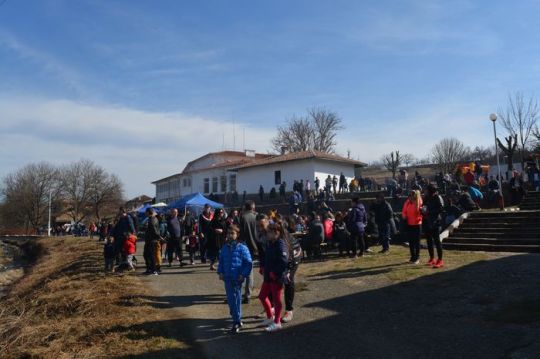
Alexander’s sarcophagus
The colouring has faded very much since the monument was unearthed. It is generally called Alexander’s sarcophagus, but it has not been possible as yet to decide whose remains it contained. Some aver that it enclosed the corpse of a Persian satrap who, after fighting hard for his country, at last deserted and went over to the Macedonian conqueror, who admitted him to his intimacy. One thing, however, is certain, namely, that this, which is one of the most important remaining monuments of Greek antiquity, is the work of an artist contemporary with Lysippus, who flourished towards the end of the fourth century B.c.
This sarcophagus, which is unique both as regards style and preservation, is modelled to represent an elongated Greek temple, with its friezes, pediments, etc.
Greeks and Persians
South Side.—The sculptures on this side represent a cavalry engagement between the Greeks and Persians at the battle of Issus, or Arbela. The Greeks are either nude, save for a light chlamys, or else are clad in armour, and wear variously the helmet and the Macedonian cap; while the Persians are dressed in trunk-hose and tunics with a short tight-sleeved cloak hung from the neck down their backs. The Greek horses are ridden barebacked with only a bit and bridle, and an occasional breast- band ; the Persian chargers, on the other hand, are richly caparisoned. The figures, at first sight, appear somewhat confusedly arranged, but a closer inspection reveals five distinct and symmetrical groups. The central one is formed of four figures—a Greek horseman ; a barbarian kneeling and holding his arms up as if asking quarter; a barbarian archer likewise on his knees ; and another towards the left, standing.
The two other groups, one on each side of the central one, are each composed of two figures; that on the right represents a hand-to-hand encounter between a Persian horseman and a Greek foot-soldier, and that on the left a combat between a Greek and Persian foot-soldier. Of the two remaining groups that on the left is of a Greek horseman with couched lance, charging a Persian who is struggling to get clear of his fallen charger; that towards the right is of a Persian horseman receiving a lance-thrust from a mounted Greek general, and, with hands still clutching the reins, falling into the arms of his attendant shield-bearer. On the ground are five symmetrically arranged figures of killed or wounded men.
Head.—The carvings here represent an incident of warfare, and are, like those just described, noted for their symmetrical grouping. In the centre is a Persian horseman about to spear a wounded Greek lying on the ground, and covering himself with his buckler; to the right and left, respectively, is a single – handed combat between a Greek and a Persian.
0 notes
Photo

Alexander’s sarcophagus
The colouring has faded very much since the monument was unearthed. It is generally called Alexander’s sarcophagus, but it has not been possible as yet to decide whose remains it contained. Some aver that it enclosed the corpse of a Persian satrap who, after fighting hard for his country, at last deserted and went over to the Macedonian conqueror, who admitted him to his intimacy. One thing, however, is certain, namely, that this, which is one of the most important remaining monuments of Greek antiquity, is the work of an artist contemporary with Lysippus, who flourished towards the end of the fourth century B.c.
This sarcophagus, which is unique both as regards style and preservation, is modelled to represent an elongated Greek temple, with its friezes, pediments, etc.
Greeks and Persians
South Side.—The sculptures on this side represent a cavalry engagement between the Greeks and Persians at the battle of Issus, or Arbela. The Greeks are either nude, save for a light chlamys, or else are clad in armour, and wear variously the helmet and the Macedonian cap; while the Persians are dressed in trunk-hose and tunics with a short tight-sleeved cloak hung from the neck down their backs. The Greek horses are ridden barebacked with only a bit and bridle, and an occasional breast- band ; the Persian chargers, on the other hand, are richly caparisoned. The figures, at first sight, appear somewhat confusedly arranged, but a closer inspection reveals five distinct and symmetrical groups. The central one is formed of four figures—a Greek horseman ; a barbarian kneeling and holding his arms up as if asking quarter; a barbarian archer likewise on his knees ; and another towards the left, standing.
The two other groups, one on each side of the central one, are each composed of two figures; that on the right represents a hand-to-hand encounter between a Persian horseman and a Greek foot-soldier, and that on the left a combat between a Greek and Persian foot-soldier. Of the two remaining groups that on the left is of a Greek horseman with couched lance, charging a Persian who is struggling to get clear of his fallen charger; that towards the right is of a Persian horseman receiving a lance-thrust from a mounted Greek general, and, with hands still clutching the reins, falling into the arms of his attendant shield-bearer. On the ground are five symmetrically arranged figures of killed or wounded men.
Head.—The carvings here represent an incident of warfare, and are, like those just described, noted for their symmetrical grouping. In the centre is a Persian horseman about to spear a wounded Greek lying on the ground, and covering himself with his buckler; to the right and left, respectively, is a single – handed combat between a Greek and a Persian.
0 notes
Photo
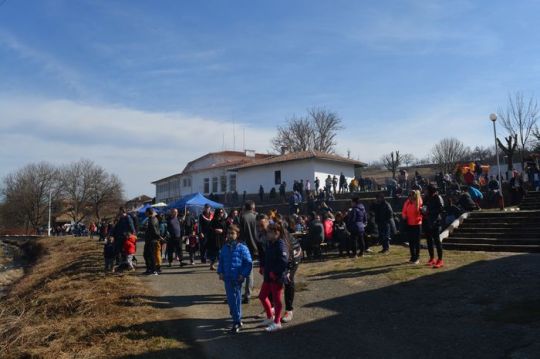
Alexander’s sarcophagus
The colouring has faded very much since the monument was unearthed. It is generally called Alexander’s sarcophagus, but it has not been possible as yet to decide whose remains it contained. Some aver that it enclosed the corpse of a Persian satrap who, after fighting hard for his country, at last deserted and went over to the Macedonian conqueror, who admitted him to his intimacy. One thing, however, is certain, namely, that this, which is one of the most important remaining monuments of Greek antiquity, is the work of an artist contemporary with Lysippus, who flourished towards the end of the fourth century B.c.
This sarcophagus, which is unique both as regards style and preservation, is modelled to represent an elongated Greek temple, with its friezes, pediments, etc.
Greeks and Persians
South Side.—The sculptures on this side represent a cavalry engagement between the Greeks and Persians at the battle of Issus, or Arbela. The Greeks are either nude, save for a light chlamys, or else are clad in armour, and wear variously the helmet and the Macedonian cap; while the Persians are dressed in trunk-hose and tunics with a short tight-sleeved cloak hung from the neck down their backs. The Greek horses are ridden barebacked with only a bit and bridle, and an occasional breast- band ; the Persian chargers, on the other hand, are richly caparisoned. The figures, at first sight, appear somewhat confusedly arranged, but a closer inspection reveals five distinct and symmetrical groups. The central one is formed of four figures—a Greek horseman ; a barbarian kneeling and holding his arms up as if asking quarter; a barbarian archer likewise on his knees ; and another towards the left, standing.
The two other groups, one on each side of the central one, are each composed of two figures; that on the right represents a hand-to-hand encounter between a Persian horseman and a Greek foot-soldier, and that on the left a combat between a Greek and Persian foot-soldier. Of the two remaining groups that on the left is of a Greek horseman with couched lance, charging a Persian who is struggling to get clear of his fallen charger; that towards the right is of a Persian horseman receiving a lance-thrust from a mounted Greek general, and, with hands still clutching the reins, falling into the arms of his attendant shield-bearer. On the ground are five symmetrically arranged figures of killed or wounded men.
Head.—The carvings here represent an incident of warfare, and are, like those just described, noted for their symmetrical grouping. In the centre is a Persian horseman about to spear a wounded Greek lying on the ground, and covering himself with his buckler; to the right and left, respectively, is a single – handed combat between a Greek and a Persian.
0 notes
Text
On a Bronze Statue of Alexander the Great
Anthologia Planudea 120, variously attributed to Asclepiades or Archelaus
Alexander’s daring, Alexander’s entire form –
These Lysippus has copied; what power’s in this bronze!
The metal man seems about to speak as he looks up to the sky:
“The earth I place beneath my feet; Zeus, you may keep Olympus.”
τόλμαν Ἀλεξάνδρου καὶ ὅλαν ἀπεμάξατο μορφὰν
Λύσιππος: τίν᾽ ὁδὶ χαλκὸς ἔχει δύναμιν;
αὐδασοῦντι δ᾽ ἔοικεν ὁ χάλκεος ἐς Δία λεύσσων:
‘γᾶν ὑπ᾽ ἐμοὶ τίθεμαι: Ζεῦ, σὺ δ᾽ Ὄλυμπον ἔχε.'
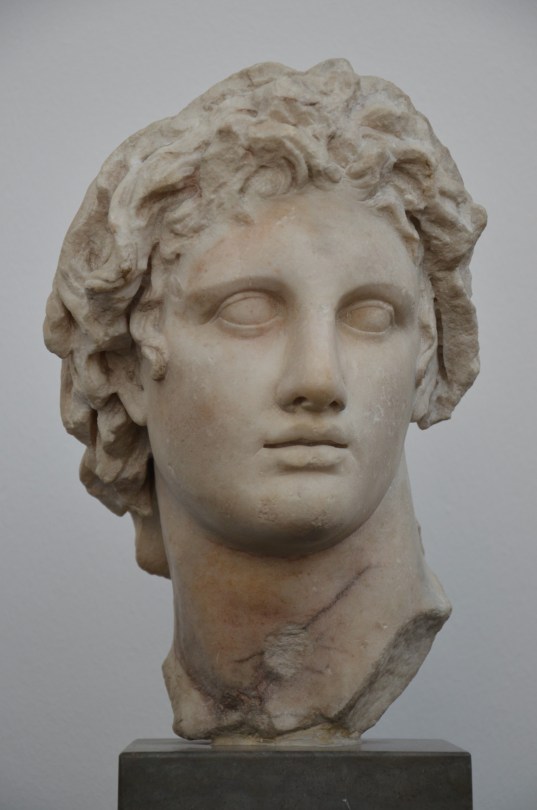
Alexander the Great. Marble copy by an unknown artist of the 3rd century BCE, after a lost bronze original by the sculptor Lysippus. From Alexandria, Egypt; now in the Ny Carlsberg Glyptotek, Copenhagen. Photo credit: Carole Raddato.
#classics#tagamemnon#Greek#Greek language#Ancient Greek#Ancient Greek language#langblr#poem#poetry#translation#poetry in translation#Greek translation#Ancient Greek translation#ancient history#Ancient Greece#Alexander the Great#Hellenistic period#Greek poetry#Ancient Greek poetry#Hellenistic poetry#Asclepiades#Archelaus#epigram#ecphrasis#quatrain#elegiac couplets#Anthologia Planudea#Planudean Anthology#Anthologia Graeca#Greek Anthology
244 notes
·
View notes
Photo

Alexander’s sarcophagus
The colouring has faded very much since the monument was unearthed. It is generally called Alexander’s sarcophagus, but it has not been possible as yet to decide whose remains it contained. Some aver that it enclosed the corpse of a Persian satrap who, after fighting hard for his country, at last deserted and went over to the Macedonian conqueror, who admitted him to his intimacy. One thing, however, is certain, namely, that this, which is one of the most important remaining monuments of Greek antiquity, is the work of an artist contemporary with Lysippus, who flourished towards the end of the fourth century B.c.
This sarcophagus, which is unique both as regards style and preservation, is modelled to represent an elongated Greek temple, with its friezes, pediments, etc.
Greeks and Persians
South Side.—The sculptures on this side represent a cavalry engagement between the Greeks and Persians at the battle of Issus, or Arbela. The Greeks are either nude, save for a light chlamys, or else are clad in armour, and wear variously the helmet and the Macedonian cap; while the Persians are dressed in trunk-hose and tunics with a short tight-sleeved cloak hung from the neck down their backs. The Greek horses are ridden barebacked with only a bit and bridle, and an occasional breast- band ; the Persian chargers, on the other hand, are richly caparisoned. The figures, at first sight, appear somewhat confusedly arranged, but a closer inspection reveals five distinct and symmetrical groups. The central one is formed of four figures—a Greek horseman ; a barbarian kneeling and holding his arms up as if asking quarter; a barbarian archer likewise on his knees ; and another towards the left, standing.
The two other groups, one on each side of the central one, are each composed of two figures; that on the right represents a hand-to-hand encounter between a Persian horseman and a Greek foot-soldier, and that on the left a combat between a Greek and Persian foot-soldier. Of the two remaining groups that on the left is of a Greek horseman with couched lance, charging a Persian who is struggling to get clear of his fallen charger; that towards the right is of a Persian horseman receiving a lance-thrust from a mounted Greek general, and, with hands still clutching the reins, falling into the arms of his attendant shield-bearer. On the ground are five symmetrically arranged figures of killed or wounded men.
Head.—The carvings here represent an incident of warfare, and are, like those just described, noted for their symmetrical grouping. In the centre is a Persian horseman about to spear a wounded Greek lying on the ground, and covering himself with his buckler; to the right and left, respectively, is a single – handed combat between a Greek and a Persian.
0 notes
Photo

Alexander’s sarcophagus
The colouring has faded very much since the monument was unearthed. It is generally called Alexander’s sarcophagus, but it has not been possible as yet to decide whose remains it contained. Some aver that it enclosed the corpse of a Persian satrap who, after fighting hard for his country, at last deserted and went over to the Macedonian conqueror, who admitted him to his intimacy. One thing, however, is certain, namely, that this, which is one of the most important remaining monuments of Greek antiquity, is the work of an artist contemporary with Lysippus, who flourished towards the end of the fourth century B.c.
This sarcophagus, which is unique both as regards style and preservation, is modelled to represent an elongated Greek temple, with its friezes, pediments, etc.
Greeks and Persians
South Side.—The sculptures on this side represent a cavalry engagement between the Greeks and Persians at the battle of Issus, or Arbela. The Greeks are either nude, save for a light chlamys, or else are clad in armour, and wear variously the helmet and the Macedonian cap; while the Persians are dressed in trunk-hose and tunics with a short tight-sleeved cloak hung from the neck down their backs. The Greek horses are ridden barebacked with only a bit and bridle, and an occasional breast- band ; the Persian chargers, on the other hand, are richly caparisoned. The figures, at first sight, appear somewhat confusedly arranged, but a closer inspection reveals five distinct and symmetrical groups. The central one is formed of four figures—a Greek horseman ; a barbarian kneeling and holding his arms up as if asking quarter; a barbarian archer likewise on his knees ; and another towards the left, standing.
The two other groups, one on each side of the central one, are each composed of two figures; that on the right represents a hand-to-hand encounter between a Persian horseman and a Greek foot-soldier, and that on the left a combat between a Greek and Persian foot-soldier. Of the two remaining groups that on the left is of a Greek horseman with couched lance, charging a Persian who is struggling to get clear of his fallen charger; that towards the right is of a Persian horseman receiving a lance-thrust from a mounted Greek general, and, with hands still clutching the reins, falling into the arms of his attendant shield-bearer. On the ground are five symmetrically arranged figures of killed or wounded men.
Head.—The carvings here represent an incident of warfare, and are, like those just described, noted for their symmetrical grouping. In the centre is a Persian horseman about to spear a wounded Greek lying on the ground, and covering himself with his buckler; to the right and left, respectively, is a single – handed combat between a Greek and a Persian.
0 notes